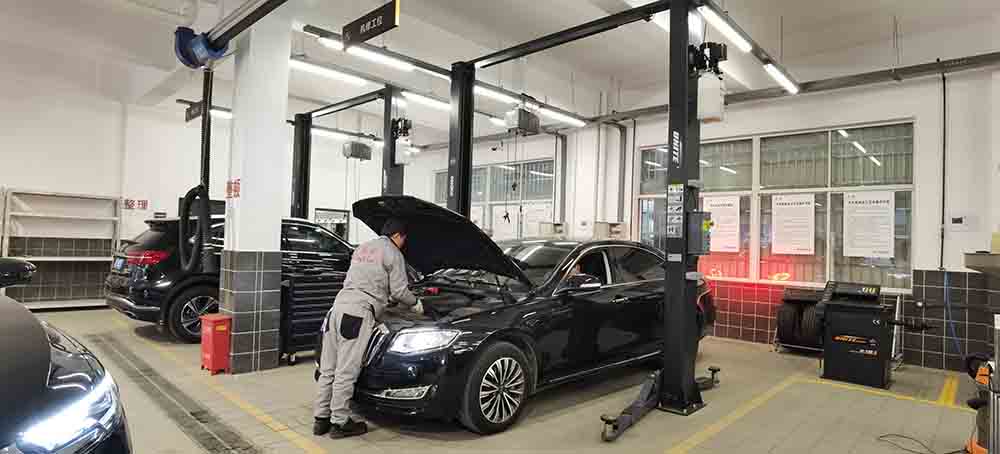Becoming a knowledgeable user of 2 post car lifts revolves around being a cautious user of 2 post car lifts. With 2 post car lifts safety as our primary concern, the Automotive Lift Institute has compiled a set of recommendations to ensure your safety when operating a vehicle lift. Whether you are utilizing a two-post lift, four-post lift, or mobile column lift, whether it is surface-mounted or inground, prioritizing lift safety should become routine, and adhering to these recommended procedures is crucial.
- If the lift is experiencing any issues, refrain from using it and immediately notify your supervisor. Do not take any risks.
- When lifting, elevate the vehicle until its wheels are approximately 6″ off the ground. Afterward, bounce the vehicle and verify that the adapters are securely in contact with the frame to ensure a safe engagement.
- Confirm that all four lift pads are in contact with their respective lift points and supporting the weight of the vehicle. It is not uncommon for three lift arms to contact the car while the fourth arm remains free to move. Any lift arm that can be shifted while the car is raised indicates an uneven load. Lower the car and readjust the arm position.
- If a lift arm is incorrectly positioned, gradually lower the vehicle to the floor and reposition the arm.
2 Post Car Lifts Safety Note
Safety Note – Please be aware that certain lifts are equipped with swing arm restraints, which secure the unloaded arm to avoid unplanned movements. However, it’s important to note that these restraints are not intended to prevent the car from falling in cases of improper positioning. It is noteworthy that the arm restraints activate as soon as the lift is raised a few inches above the ground and they will disengage upon lowering the lift back down to the ground.
Safety Note – It is crucial that the weight of the vehicle is evenly distributed. In case you are using a 2-post lift with a 10,000-lb. capacity, be sure that each arm, designed to hold 2500 lbs., is loaded properly. It is important not to exceed the weight limit on one end of the lift to avoid any potential hazards.
When conducting repairs on a vehicle elevated on a frame contact lift, it is important to avoid using a large prybar or any other actions that may cause the vehicle to come off the adapters. When dealing with tightly secured bolts, using an air impact wrench is recommended. Ensure that the contact points on the lift where the vehicle rests are in good condition and free from oil or grease. Some lifts have front and rear arms of different lengths, known as asymmetrical arms. Before using this type of lift, it is essential to consult the manufacturer’s instructions. All lifts have a safety latch system that should be engaged once the desired lift height is achieved. Always lower the lift into the locked position before going under the vehicle. Never use a lift that cannot engage the safety latch system. While working on a lift, tall jack stands are often used to assist with load changes. The lift area should be kept clean and free from grease or oil on the floor. Store hoses, extension cords, and tools in their designated places.
It is likely that you are already familiar with the basic usage of a car lift. However, it is important to note that not all lifts function in the same way. It is crucial to receive training on the proper usage of your specific lift in order to ensure safety during lifting operations. Prior to using a lift, particularly if it is a new or different model from what you are accustomed to, make sure you have been trained and are knowledgeable about the instructions provided by the manufacturer. Take the time to thoroughly go through all safety materials, including warning labels. It is essential to strictly adhere to the lift manufacturer’s instructions on operating the lift, including any safety features that may be included.

